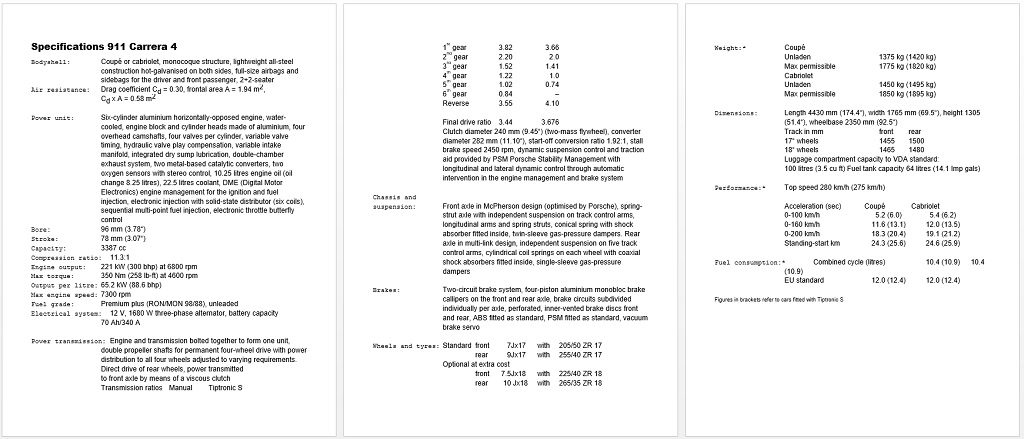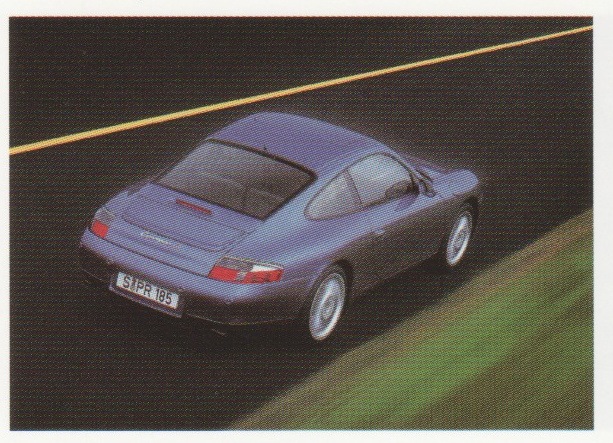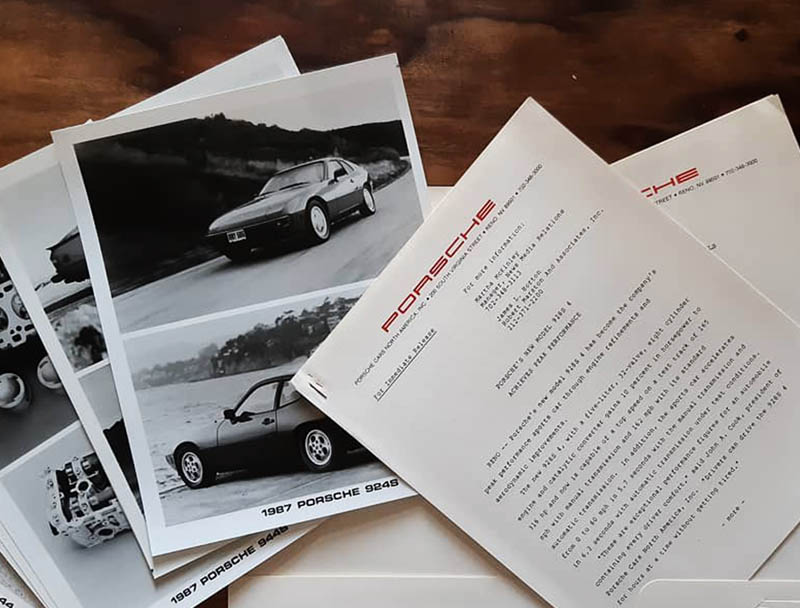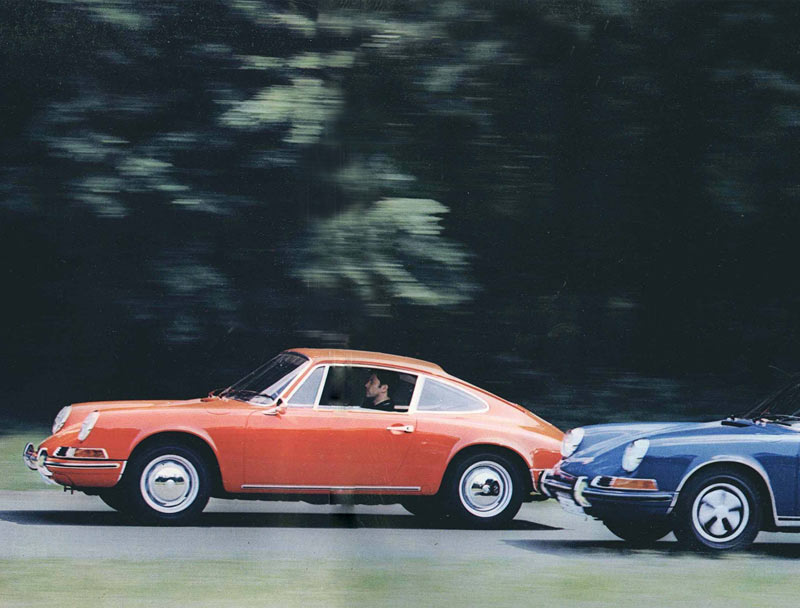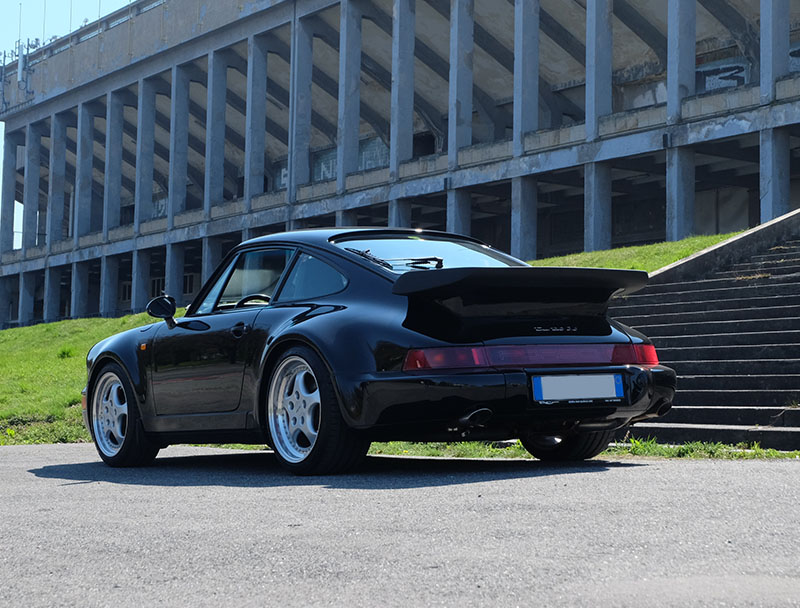1999 - Special on 911 (996) Carrera 4
Geneva, March 1999
Porsche 911 Carrera 4
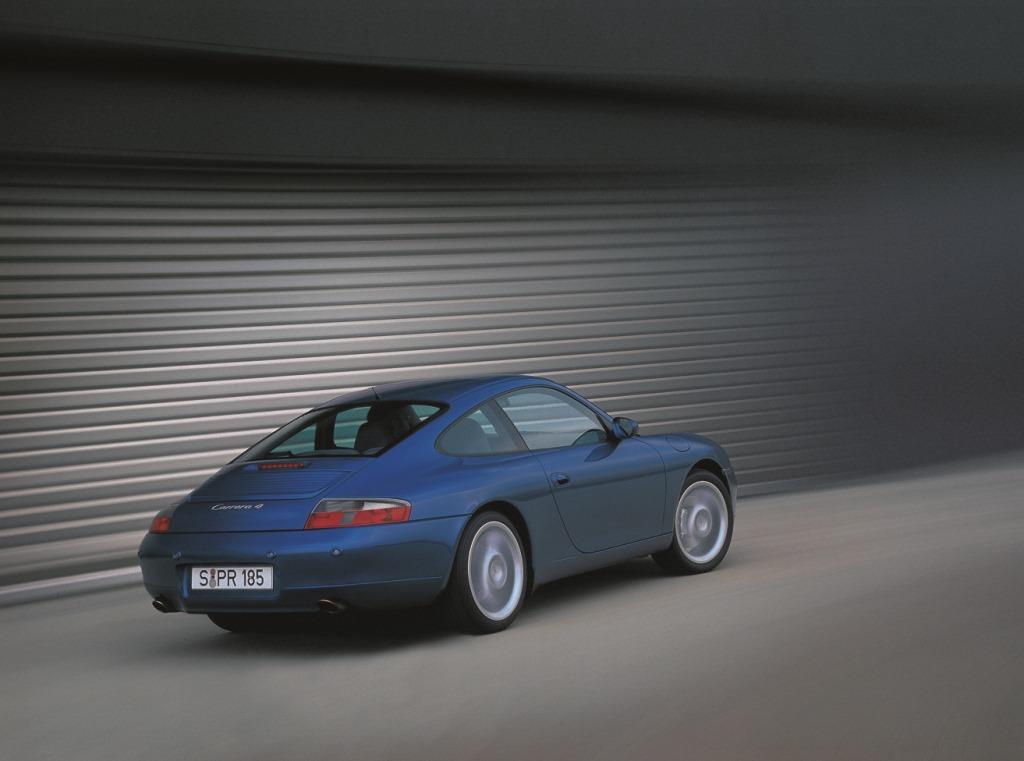
Permanent Four-Wheel Drive with Perfect Power Distribution
Benefitting from years of thorough experience with four-wheel drive, Porsche’s engineers have found a particularly effective solution in upgrading this drive technology to the highest standard: Variable distribution of engine power to the front axle by a viscous clutch in the front differential guarantees excellent traction and supreme driving safety on all kinds of roads and under all conditions, without the driver being required to influence the traction aid systems.
Porsche Stability Management
The Carrera 4 is the first Porsche to feature the Company’s PSM Porsche Stability Management serving to intervene in the engine management and brake system in order to stabilise the car in both longitudinal and lateral direction whenever the car is driven to – or beyond – the extreme. And PSM has been tuned by Porsche’s suspension engineers to ensure that the sporting character of the 911 is not suppressed by premature intervention. Indeed, the objective in this process was to provide brief but essential assistance whenever necessary on all four wheels, should the car come too close to the laws of physics.
Electronic gas pedal
A gas pedal incorporating a sensor to transmit electrical signals to the Motronic and an actuator operating the throttle butterfly are the essential features required for dynamic drive control with all the qualities of Porsche Stability Management. The use of such sophisticated electronics pays off not only in extreme situations, since E-Gas, as it is called, also improves the response of the engine to the accelerator and allows a further reduction of fuel consumption by adjusting the throttle butterfly perfectly to the engine control map.
A further advantage is the reduction of exhaust emissions and last but not least E-Gas also provides even better cruise control.
Large-Volume Side Airbags Fitted as Standard
Apart from the full-size frontal airbags for the driver and front passenger, Porsche’s new and highly progressive Side Impact Protection System (POSIP) comes as a standard feature. It consists of two side airbags fitted in the doors and additional door lining taking up impact energy. Offering extra-large volume of no less than 30 litres, the two side airbags ensure optimum efficiency throughout the entire seat adjustment range, POSIP thus protecting the driver and his front passenger in all areas around their head, chest, arms and hips, even with the roof down and the side windows fully retracted.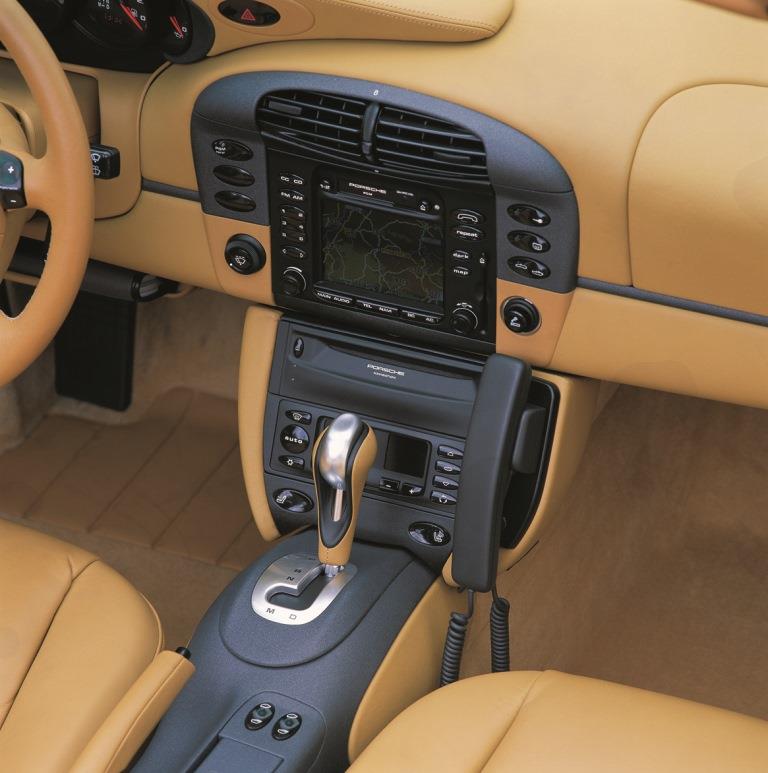
Another Porsche First: Four-Wheel Drive plus Automatic Transmission
The new Carrera 4 is the first-ever Porsche allowing the customer to combine four-wheel drive both with a six-speed manual gearbox and five-speed Tiptronic S.
New Headlight Look
Like all Porsche 911s in the 1999 model year, the Carrera 4 comes with a new headlight look: The direction indicator units within the headlights are white, the direction indicators in the rear light clusters whitish-grey instead of orange.
Exclusive Aluminium Wheels for the Carrera 4
A clear sign of distinction characterising the Porsche 911 Carrera 4 at very first sight is provided by the 17-inch light-alloy wheels in unmistakable spoke design. Extending far inside to the hub, the spokes become wider towards the rim and merge into the base at the far outside, making the wheels look even more powerful and larger. These 17-inch wheels are the right choice particularly for the comfort-oriented sports car driver.
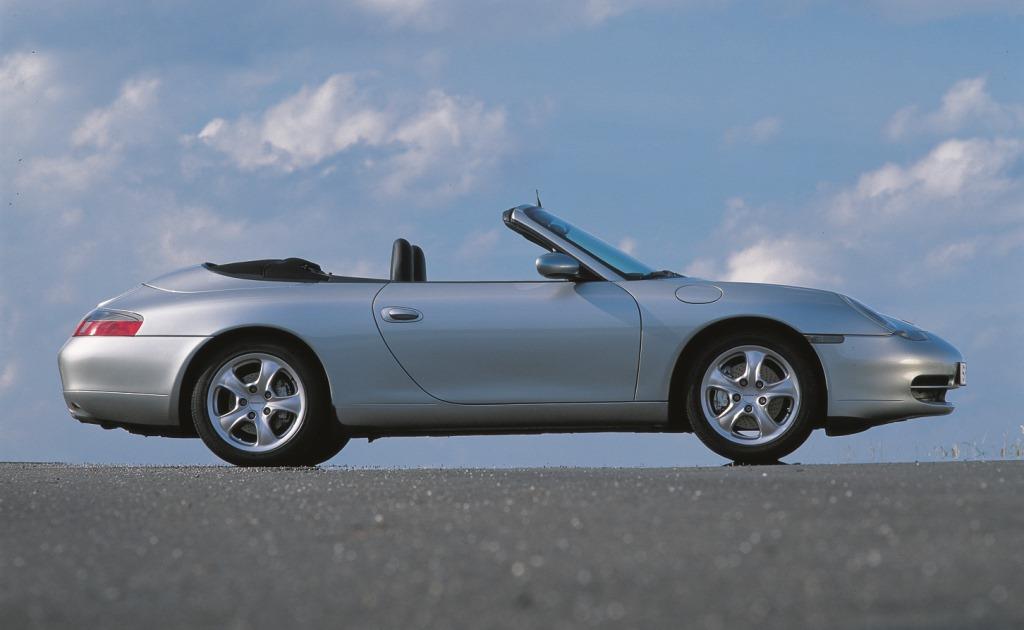
Superior Driving Safety, Outstanding Driving Qualities
The springs, anti-roll bars and dampers are all specially tuned and modified to reflect the dynamic driving qualities of the four-wheel-drive model. Consistent adjustment of axle geometry to four-wheel drive and re-tuned elasticity on the front axle ensure neutral behaviour all the way to extreme limits, allowing the driver to safely approach the highest possible speeds in a bend without losing control of his car.
Superior Crash Safety
Carefully defined deformation of the steel bodyshell keeps the loads acting on the car’s occupants in an accident to an absolute minimum. Throughout the entire process of developing the new 911, passive safety was consistently enhanced to an ever-increasing standard, the results of numerous crash tests confirming the conviction of Porsche’s engineers that they have created one of the safest high-performance sports cars in the world.
Discreet Signs of Distinction
Applying the principle of being „great to look at but even greater inside“, the Carrera 4 does not in any way flaunt its wares. The Carrera 4 model designation stands out in titanium colour on the engine compartment lid and is also to be admired on the black wheel hub covers. Further visible signs of distinction are the special 17-inch wheels and titanium-coloured brake callipers. And like all Porsche 911s in the 1999 model year, the Carrera 4 boasts the special look of the light units already mentioned.
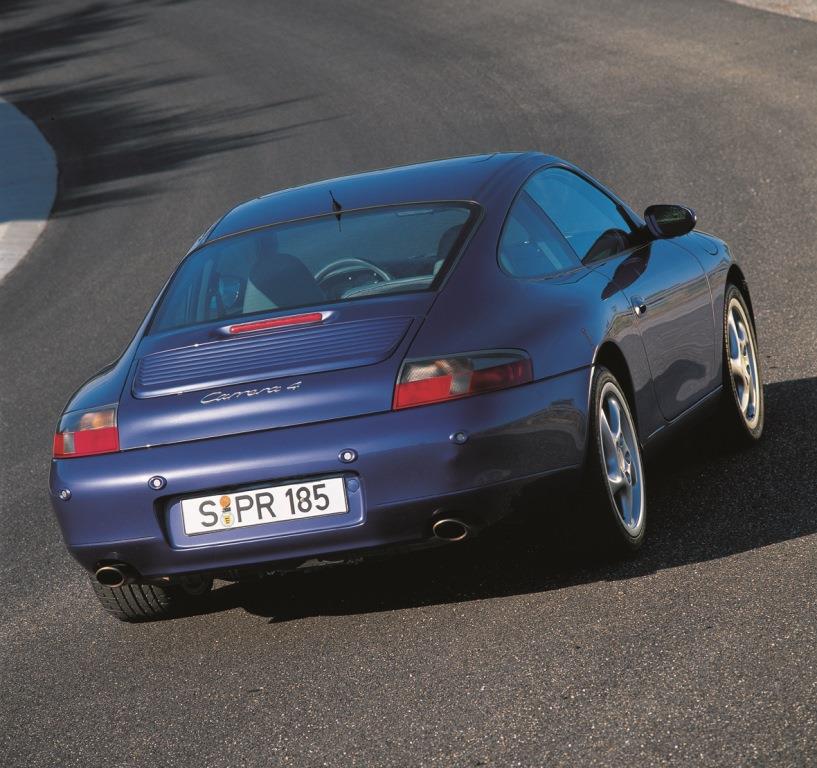
Air Drag and Lift Forces Reduced to a Minimum
The Porsche 911 offers a low drag coefficient compared with other sports cars. And at 0.58 m2, the product of drag coefficient and the frontal area of the car is also very low and therefore advantageous on the road. A further, particularly important factor is the minimisation of lift forces on the 911 Carrera 4, like on the Carrera itself, the Cfa lift factor on the front axle being a mere 0.08, while rear axle lift, thanks to the spoiler automatically coming out at speed, is even lower at 0.05.
Water-cooled boxer engine
An efficient cylinder charge ensured by four-valve technology and stable thermal conditions guaranteed by water cooling make Porsche’s flat-six power unit a genuine performance machine. Displacing 3.4 litres, the engine of the 911 Carrera 4 develops maximum output of 300 bhp or 221 kW. Top speed is 280 km/h or 174 mph.
A further point is that the horizontally-opposed engine, through its concept alone, offers decisive benefits in the construction of a sports car: Compensation of mass forces is perfect, dimensions are kept to a minimum, and the short, stiff crankshaft allows high engine speeds.
Aluminum suspensions
All track control arms on the suspension and the two axle subframes integrated in the body are made of light alloy. In its design and dynamic driving characteristics, the front axle has been modified in accordance with the car’s drive technology feeding power also to the front wheels.
Four-piston monobloc brake calipers
Following positive experience in motor racing, the Porsche 911 Carrera 4, like all other Porsche models, comes with four-piston monobloc brake callipers made of light alloy.
A particular advantage of this technology is the high standard of safety ensured at all times and minimum fading even under extreme conditions.
Litronic headlights with dynamic headlight range control
The Carrera 4, as well as all other models in the 911 range, is available as an option with Litronic headlights, special gas-discharge units illuminating the road ahead far more brightly and thoroughly and thus significantly improving safety at night. A further contribution to your extra driving safety is the dynamic headlight range control considering not only the load the vehicle is carrying, but also any change in body angle (sway) due to dynamic driving conditions. The halogen bulbs (H7) for the high-beam headlights are surrounded by a particularly efficient free-space reflector. Whenever the driver activates the high beams, the low-beam headlights remain switched on and also move their own beam up by way of headlight range control in order to improve illumination of the road ahead. A further feature of the Litronic headlights, finally, is the headlight cleaning system.
Individual Sports Features
It almost goes without saying that the Carrera 4 can be enhanced to an even more sporting standard as an expression of the customer’s personal taste. Features available individually are sports seats with reinforced side support, 18-inch turbo-look wheels measuring 225/40 ZR 18 at the front and 265/35 ZR 18 at the rear, and – as on the coupé – a sports suspension with even firmer and shorter springs, harder dampers and reinforced anti-roll bars.
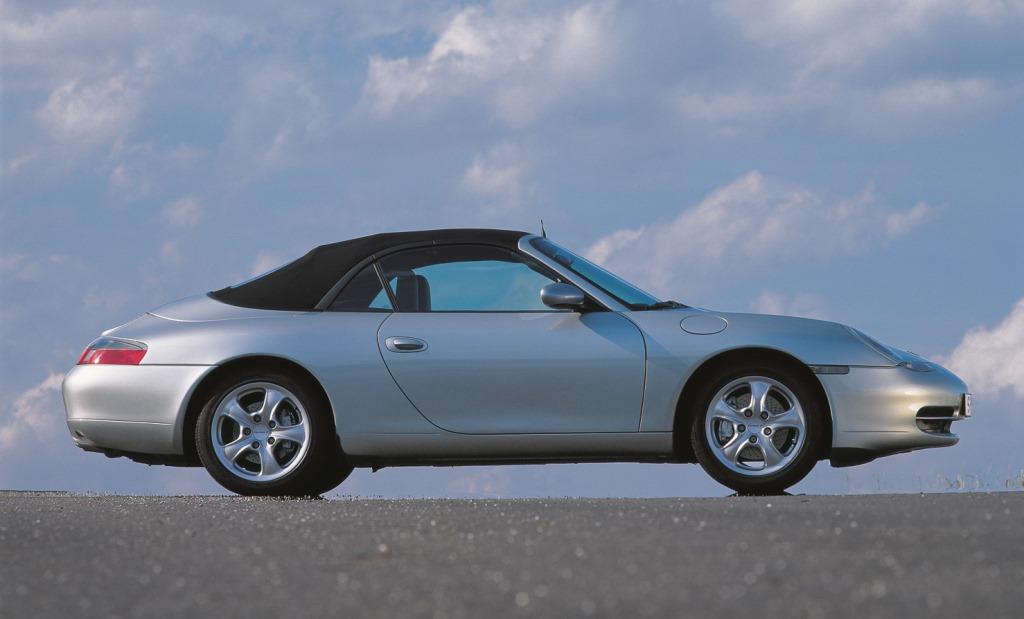
Consistently Continuing the Tradition of Four-Wheel Drive
The Carrera 4 continues the tradition of four-wheel-drive 911 models dating all the way back to the Porsche 959. Production of the new car will be starting in October 1998, the Carrera 4 being available from the start in both coupé and cabriolet guise either with a six-speed manual gearbox or, as an alternative, with five-speed Tiptronic S.
Permanent four-wheel drive with variable power feed to the front axle is provided by a viscous clutch taking the former system to an even higher level of development. Power is delivered to the front wheels on the new model no longer by the conventional transaxle system running in a separate tube, but rather by a low-weight drive shaft in the central tunnel. The viscous clutch, in turn, has been moved from the gearbox into the front differential housing for better weight distribution.
The Carrera 4 emphasizes its particularly high standard of technical excellence not only through permanent four-wheel drive, but also through PSM Porsche Stability Management featured in this car for the first time. The particular advantage of PSM is that it combines existing longitudinal control systems, such as anti-lock brakes, anti-spin control and the Automatic Brake Differential (ABD), with dynamic lateral control tailored specifically to four-wheel drive. Brake intervention and automatic engine power control without the driver having to intervene himself serve to keep the car stable also in bends. Oversteering is avoided by automatically applying the brake on the outer front wheel in a bend, understeering is eliminated by applying the brake on the inner rear wheel.
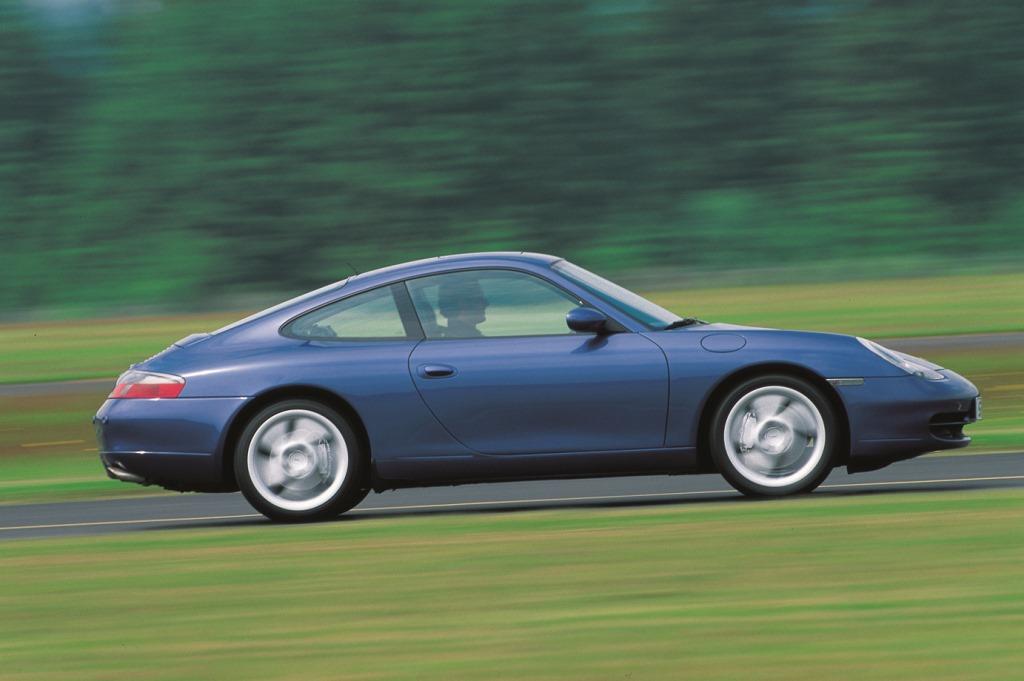
Front Axle Modifications
In its body design, the Carrera 4 has been modified at the front to accommodate the additional drive units. Further modifications were required in the area of the front axle and on the redesigned fuel tank still offering almost exactly the same capacity as before.
The emergency wheel is replaced by an even more compact folding wheel, the luggage compartment offering a capacity of no less than 100 litres or 3.5 cu ft, despite all the comprehensive modifications and changes mentioned.
Like the existing models, the new Carrera 4 is powered by Porsche’s six-cylinder water-cooled boxer now entering its third year of production. Engine displacement of 3.4 litres, maximum output of 300 bhp (221 kW) at 6800 rpm, and maximum torque of 350 Nm (258 lb-ft) at 4600 rpm remain unchanged. Top speed of the coupé model is 280 km/h or 174 mph.
The most significant modification on the engine is the throttle butterfly now operated by an actuator, an electronic gas pedal instead of the conventional mechanical connection serving to give gas. Further advantages of this innovative technology are even better engine response, low exhaust emissions and a further reduction in fuel consumption.
The permanent four-wheel-drive principle on the new Carrera 4 is both convincing and straightforward: Most of the engine’s drive power goes straight from the gearbox to the rear differential. The amount of drive power fed to the front axle, in turn, is controlled by a viscous clutch varying front-wheel drive from 5 to 40 per cent.
Less weight, better weight distribution
Drive power to the front wheels no longer goes through a separate tube according to the transaxle principle, as on the former model, but rather flows through a drive shaft in the frame tunnel. The viscous clutch is now housed within the front axle differential, the advantages of these modifications being a reduction in weight and an improvement of weight distribution.
With the entire concept of the Carrera 4 figuring into the development of Porsche’s new model generation from an early point, only minor modifications to the suspension were required for the addition of four-wheel drive: The front axle features modified wheel bearings and the springs, dampers and anti-roll bars have all been adjusted to the dynamic driving qualities of the four-wheel-drive model.
The driving characteristics of the new Carrera 4 follow Porsche’s proven concept, the car retaining the character of a genuine Porsche with its accurate and very agile steering behaviour in bends, despite four-wheel drive. The specific advantages of the more sophisticated drive system in everyday motoring are even better directional stability at high speeds, reduced sensitivity to cross-winds, and far better traction at all times.
Substantial modifications were required at the front end of the car in order to provide space for the differential and drive shafts. One of these modifications is the change in tank design, while tank capacity remains virtually unchanged. And while the front luggage compartment complete with a folding wheel on the floor of the Carrera 4 has become a little smaller, it still offers 100 litres or 3.5 cu ft of luggage space.
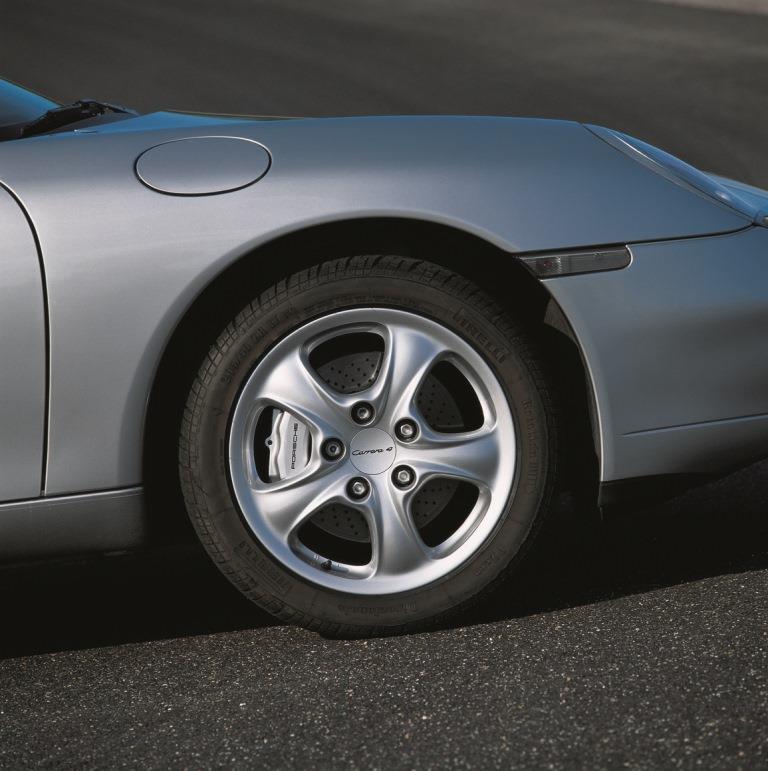
New Wheel Design
Seen from outside, the new Carrera 4 bears only a few external signs of distinction. Like all models in the 1999 911 model range, it comes with white direction indicators at the front and rear. The Carrera 4 model designation and the brake callipers stand out clearly in titanium colour, but the most striking feature is the 17-inch wheels specially designed for the Carrera 4, which is incidentally also available with 18-inch wheels in turbo look.
Other sporting extras such as sports seats or – on the coupé – a sports suspension with shorter and firmer springs, reinforced anti-roll bars and firmer gas-pressure shock absorbers are of course available to the customer on individual order.
The wide range of additional features and special equipment already available for the two-wheel drive Porsche 911 is likewise available in full on the Carrera 4.
